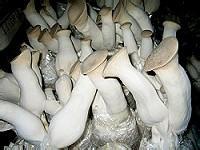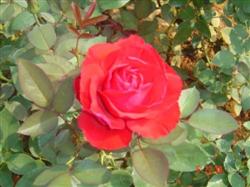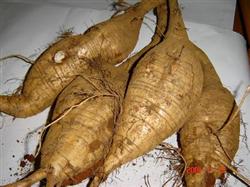Do a good job of raw material reserve and grasp the cultivation of Pleurotus eryngii in winter and spring

Pleurotus eryngii cultivated in winter and spring, the meat is thick, tender, delicious and nutritious, so it is popular among consumers. First, the cultivation time from sowing to mushroom production takes about 50-60 days. Generally, it can be arranged from October to February of the following year, cultivation bags can be made, mushrooms can be produced from November to March of the following year, and mushrooms can be cultivated in indoor or outdoor greenhouses. Second, culture material formula 1: cottonseed hull 60% Mel 70 "%, wheat bran 15% Mel 20%, cottonseed powder 10% 15%, sugar 1%, calcium carbonate 1%. Formula 2: miscellaneous sawdust 68% Mel 75%, wheat bran 10% Mel 20%, cottonseed powder 10% Mel 20%, sugar 1%, calcium carbonate 1%. Formula 3: miscellaneous sawdust 30% Mel 35%, cottonseed hull 30% Mel 35%, cottonseed powder 10% Mel 20%, sugar 1%, calcium carbonate 1%, wheat bran 10% Mel 20%. Third, select the above side to mix the raw materials well after adjusting water, and the water content is about 60%. Then put it into a polypropylene plastic bag with a size of 15 × 30 cm. The loading is tight and loose, the loading volume accounts for 60% of the bag, and the central hole is drilled deep into the material. The bag mouth is sterilized with ring plug cotton under 1.5 kg / cm 2 high pressure for 2-2.5 hours. 4. When the temperature of the inoculation is below 23 ℃, put it in the inoculation box or sterile room and connect with the bacteria. 50-60 bags can be received for every 750 grams of bottled bacteria. Then the material bag is placed in a sterilized clean room for bacteria culture, the temperature is controlled at 23-25 ℃, the indoor relative humidity is controlled at about 70%, the bag is ventilated 1-2 times a day, and the bag can grow full in 25-35 days. Fifth, the management of the growth and development stage of Pleurotus eryngii fruiting body is the key to high yield and high quality. In the mushroom room according to the shelf type discharge of good bacteria bag, each frame 5-6 layers, layer spacing 25 cm. After the discharge, the bag is covered with newspaper. Maintain relative humidity of 80% and temperature of 15-18 ℃. Uncover the newspaper in about 15 days, spray water 1-2 times a day, and maintain a relative humidity of 85% and 90%. When the humidity is high in the greenhouse, the film can be removed for 30 minutes. In winter, we should also pay attention to the elimination of carbon dioxide to avoid deformed mushrooms. Sunshades should be built above the mushroom shed to prevent the mushroom body from changing in direct light. After 1-2 batches of mushrooms, the bag can be removed from the film, covered with soil 3-4 cm, and managed by covering soil. Sixth, timely harvest from inoculation to the first tide of mushroom harvest, generally 55-60 days. When mature, the mushroom stalk is thick and long, the cover is flat, the middle is concave, and the surface is slightly hairy. Each bag generally grows 1 mushroom at a time, and each single flower weighs 50-80 grams. Clean up the material surface residue and environment after harvest, stop spraying water, after 5-7 days of bacteria culture, continue to spray water, control temperature and ventilation to promote the regeneration of the second tide mushroom. Mushroom products can be sold at any time, or sliced and dried, and should be sold or exported all the year round.
- Prev

Key points of Management of Datian Rose after Flood
1. Diseases and insect pests are not easy to occur, especially the most fatal downy mildew in the growth of cut rose flowers. The reason: because the key point of rose high pile cultivation technique is that the vegetative branches are respectively in the soil moisture, the rose pile is about 50 cm away from the soil moisture surface, there are no leaves under the pile, and the ventilation and permeability is very good, which is not beneficial to the growth of diseases and insect pests.
- Next

Cultivation techniques of High-yield Pueraria lobata
Pueraria lobata, also known as kudzu, belongs to the legume plant kudzu. Kudzu is rich in starch, isobrass, calcium, selenium, iron, copper, phosphorus, potassium and more than ten kinds of essential trace elements for the human body, which have the functions of relieving fever, relieving fever and relieving thirst, appetizer, hemorrhoids, cancer prevention and so on. It is a new green health and longevity food.
Related
- Fuxing push coffee new agricultural production and marketing class: lack of small-scale processing plants
- Jujube rice field leisure farm deep ploughing Yilan for five years to create a space for organic food and play
- Nongyu Farm-A trial of organic papaya for brave women with advanced technology
- Four points for attention in the prevention and control of diseases and insect pests of edible fungi
- How to add nutrient solution to Edible Fungi
- Is there any good way to control edible fungus mites?
- Open Inoculation Technology of Edible Fungi
- Is there any clever way to use fertilizer for edible fungus in winter?
- What agents are used to kill the pathogens of edible fungi in the mushroom shed?
- Rapid drying of Edible Fungi

